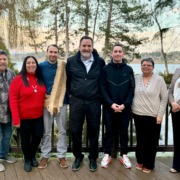Suquamish Foundation’s “A Time to Gather” fundraiser set for May 29
Reserve your seat now!
The Suquamish Foundation’s annual fundraiser and cultural showcase is scheduled for May 29 at the Kiana Lodge from 6pm to 9pm.
Join us for an evening of Suquamish bounty, cultural sharing, and great friends!
Tickets are $125 or $225 per couple. Table sponsorships are also available.
Tickets may be purchased here.
To RSVP contact Margeaux Price at mprice@suquamish.nsn.us or call (36o) 394-8453.
Nature-inspired style encouraged!











